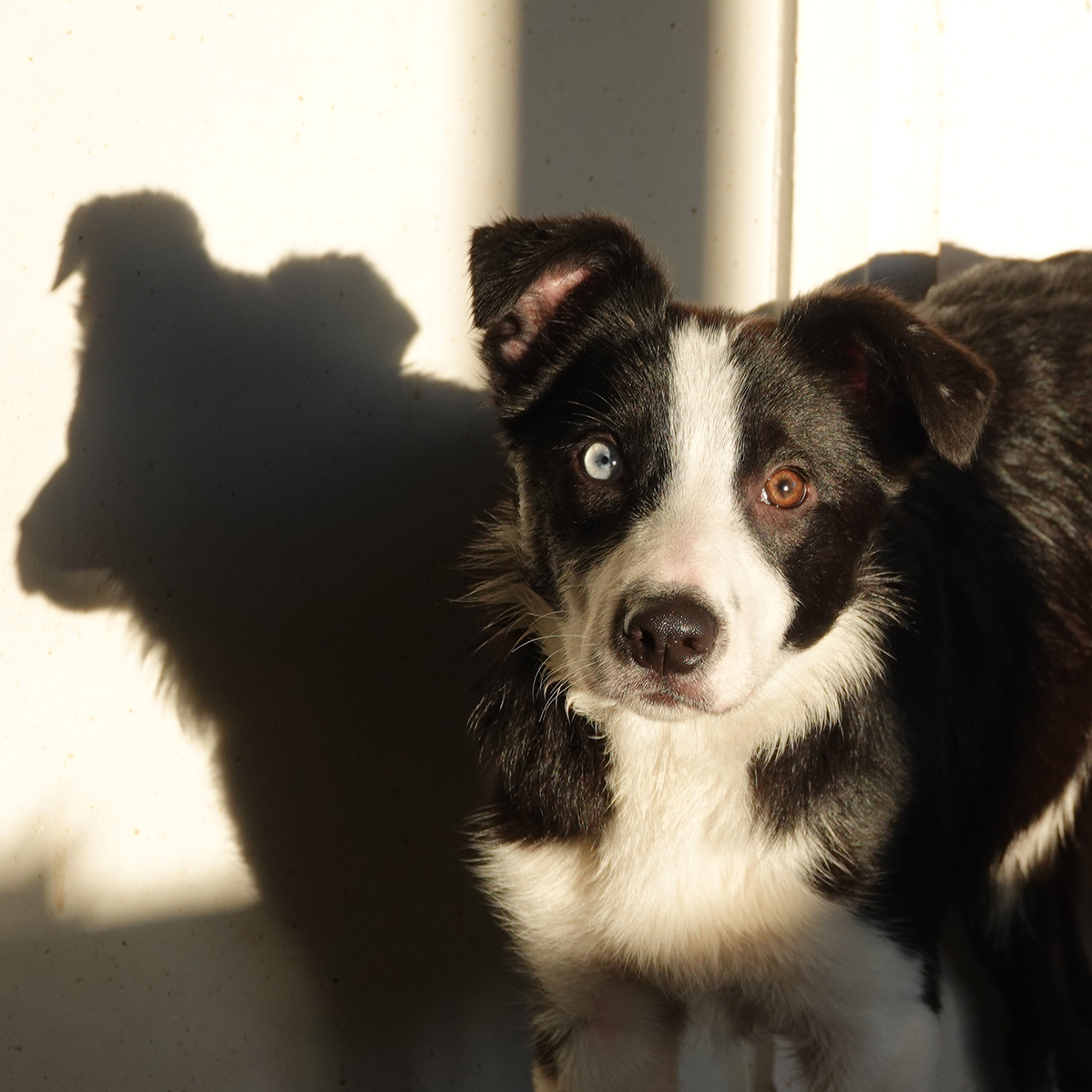Normal is always changing

What was normal in training 20 or 40 years ago is not the same today. There are folk persistently maintaining the normal of 1976, but fortunately there are enough folk with a deeper understanding of the processes that have moved normal forwards.
What we have learned in the past 20 years since the R+ clicker revolution wave first hit is changing the courses we offer and what folk are wanting to learn. All the time we are becoming more sophisticated in what we understand which in turn changes our application.
I was recently holding an online conversation about training young collies to work sheep. Would I teach the “down” (or drop) with a clicker and food prior to working on sheep?
Not now, not today.
Lie down!
The dog is not actually required to down, sit or stand when working on the sheep. It is only required to come to a stop. The tradition of viewing “must lie down” is similar to the view of “dogs must sit” when greeting.
It is the view that suppression should be used to achieve control of behaviour and control of the dog. Control is always present within the dog, originated by the dog for beneficial outcomes and the sooner we recognise when it occurs and harness it, the sooner we stop forcing control.
On the sheep the “stop there”, serves as a function of ending the current movement and listening for the next instruction.
It is much harder for the dog to take instruction when on the move, and then to change direction or momentum. The “stop there” is like engaging the clutch, prior to changing gear.
Reward prediction
When the dog recognises a learned cue or signal that has a history of reward (reinforcement) for successful responses, the memory of that reward is triggered when hearing the cue. This memory serves as an incentive to perform the behaviour. We now refer to this as Reward Predicting Stimulus (RPS).
The behaviour is affected by anticipation of the specific reward.
When the dog is trained to lie down on a verbal cue, clicked and rewarded with food, several responses will be happening. The click, or marker, functions as a cue (Reward Predicting Stimulus) which will cause to dog to look (at the person) for information on food delivery.
When working on the sheep, we do not want the dog to look at the person but maintain continual visual scanning of the sheep.
Often you will see the dog anticipate food rewards with a lick of the lips. A click causes Merrick to drool. If the dog is not going to be rewarded by food but by continuation of the predatory activities then conflict can occur.
This would be similar to you arriving at a restaurant, ordering your dinner and then rewarded with a new book or a coupon for a holiday. The repetition of the reward-error is going to screw you around and you may stop ordering dinner at all.
Behaviour in context, reward in context
Forcing a down position can be inappropriate for that dog, doing that behaviour, at that moment. The stopping position should be at the discretion of the dog suitable to the situation. The dogs that are inclined to completely drop at any opportunity as their predatory response, are more often or not called to “get up”. These are considered sticky dogs.
I would teach the dog the stop long before going anywhere near sheep, either during play, but certainly in conjunction of predatory behaviours – stalking, watching, circling, flanking, and the reward would be additional predatory opportunities. This can be in parallel with lots of juvenile behaviours, young collies often practise their behaviours on other pups, chickens, and through observation you can see the moments where they naturally come to a stop and pair that with your signals.
Not food, not a clicker.
This drop not that down
I do teach the accurate and specific “drop” or a cantilever, sphinx, where the dog drops with a level spine, avoiding any forward progression. The cue is a verbal “drop”, and I would only use this around sheep if I wanted the dog to take up this position and look to me.
The new normal is then aligning the reward to compliment continuation and repetition of that specific behaviour. The behaviour of lying down can occur for several different reasons: to take the weight off the feet, in preparation of a roll over and scratching the back, a submissive gesture, to crawl underneath something or as a predator hiding from prey.
EACH of these occurrences is a different behaviour, each should be rewarded with specific rewards suitable to those behaviours. When planning to teach any behaviour is becomes our norm to analyse the natural function of that behaviour to be able to choose the most appropriate reward.

Explore
COURSES

Build the Learning
Lifelong skills built in activities and play. A dog that is curious, confident, resilient with a natural enthusiasm for learning.
rewards skills
Learn about the fascinating landscape of rewards and how to make them the centre of your training and relationship.
Management or Training
Find a pathway to suit your lifestyle of living with dogs. When management temporarilly supports the learning, or choose training.
learn well
learn it once
Setter Members
Access to The Sett community and groups
Discount for all courses and videos 50%
Archives of previous courses and books
Share your learning, upgrade your thinking



I love the way that dogs can offer a behaviour in different ways to suit the circumstances. You have described a number of different ‘downs’. Would you cue them differently to help the dog know if you wanted a particular version? I’m thinking of the different emotional response to ‘wait’ and ‘stay’ which comes from the dog being able to predict whether there will be action or whether it can relax and wait for the handler to return. I believe the different cues provide useful information but don’t want to overthink my cues!
Absolutely, different not only the emotional context, but also the state of anticipation in the muscles – a wait will be held tense “ready for action”, a “stay” may relax the muscles to settle for the a longer duration. The more information our cues provide the clearer it becomes for the dog, the sooner they can respond and be accurate.
I use drop for the fast, be ready to move; settle for duration, and down for DC – a very specific action, usually careful and precise.
Good question Di!